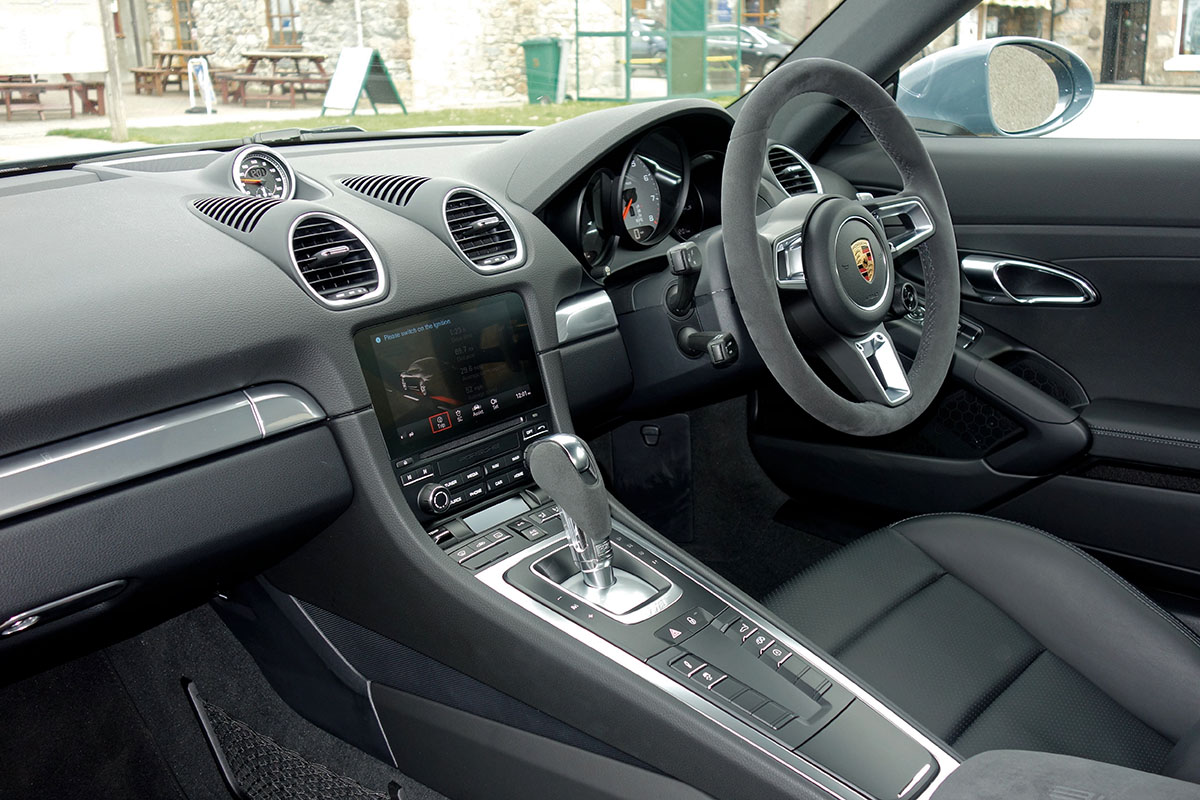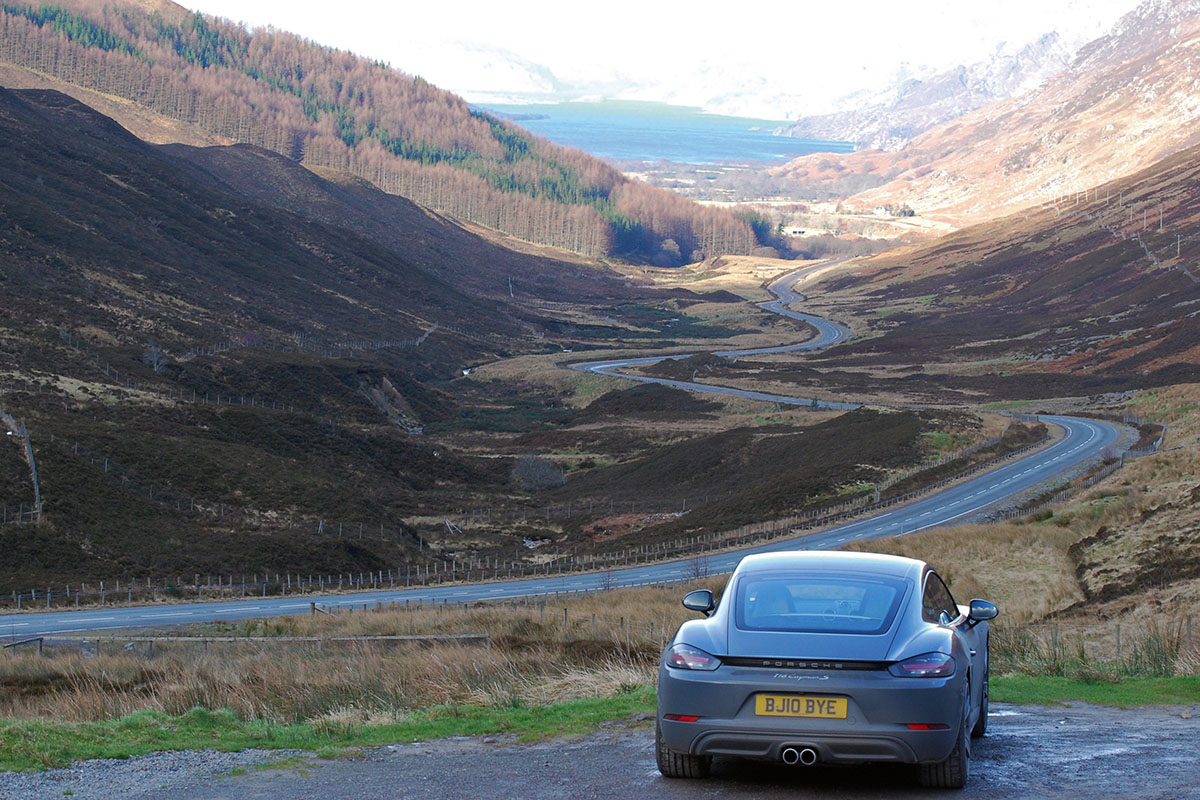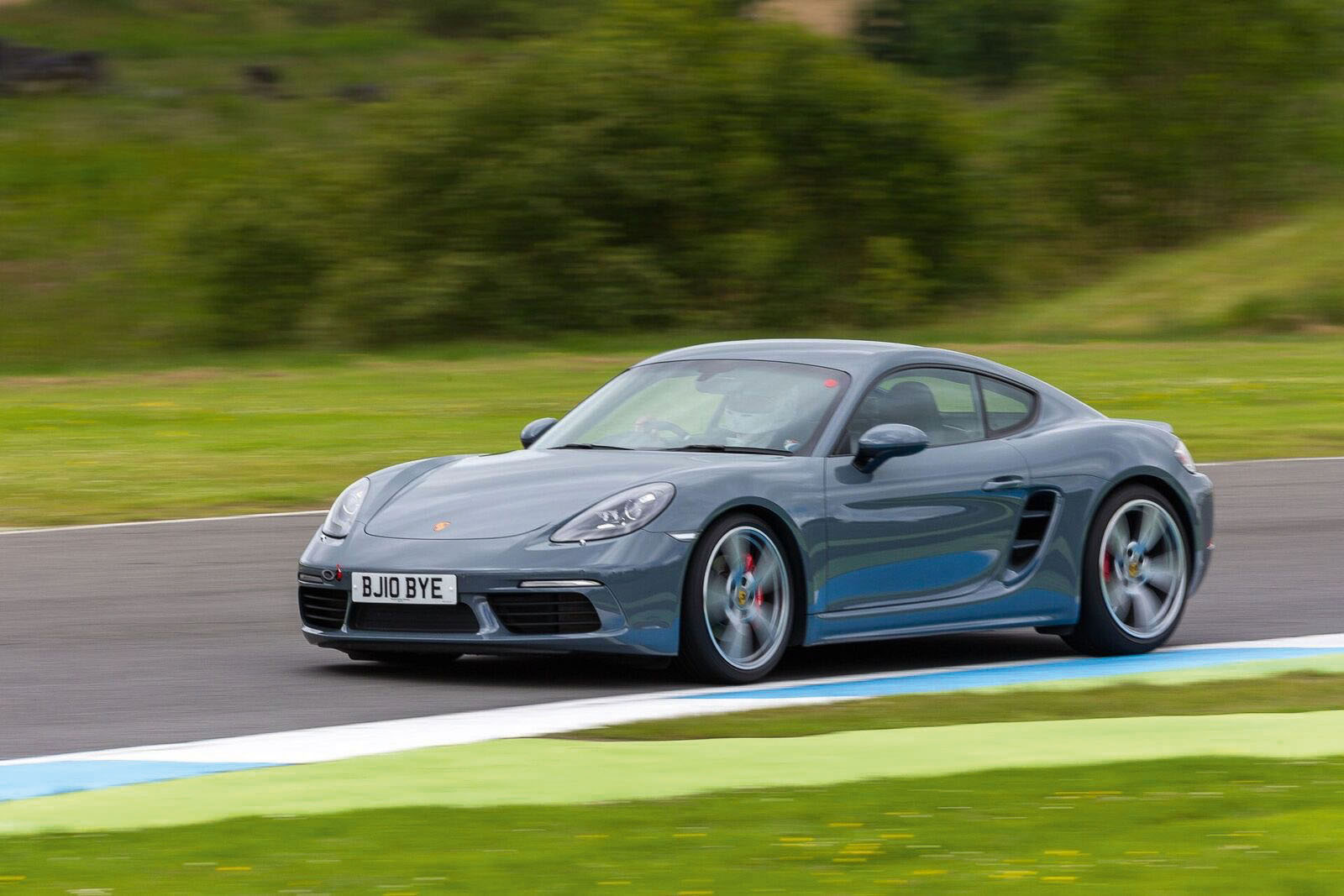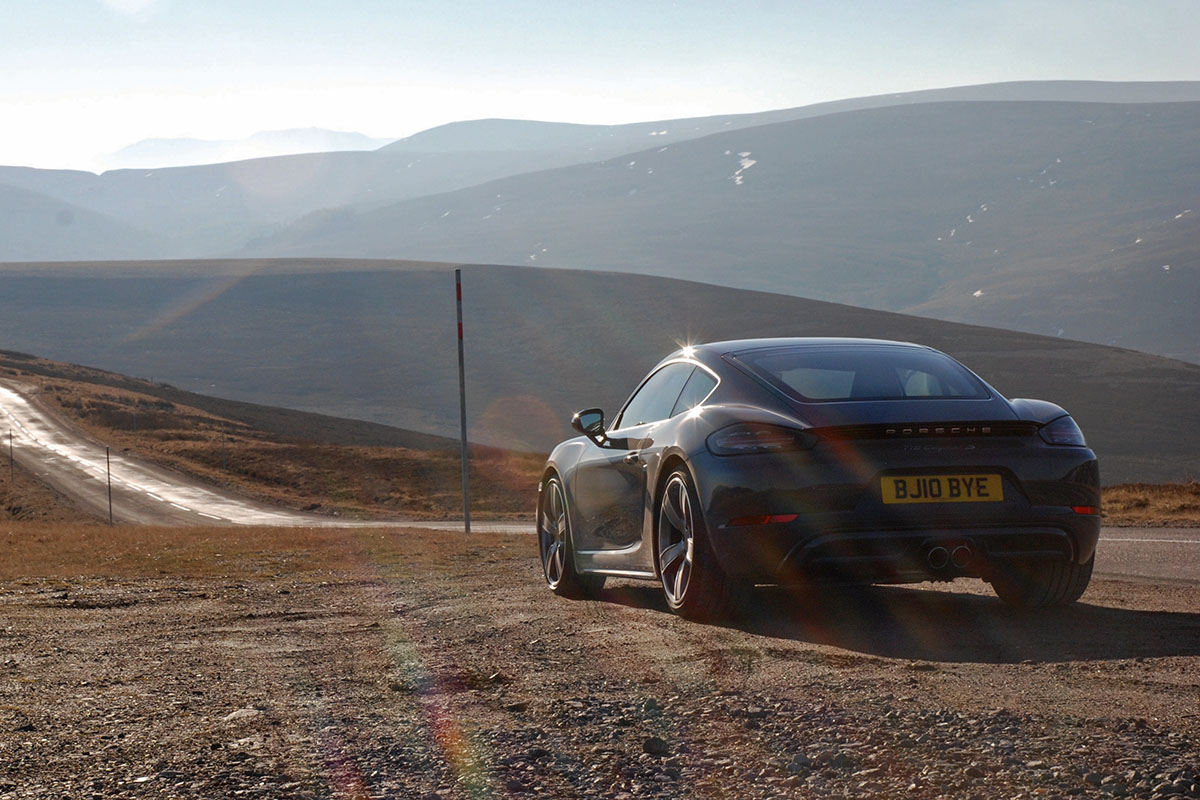Club member Brian Innes makes the case for blown flat-fours and seamless shifting.
Words: Brian Innes
Photos: John Stewart/Flat Out Photogrpahy/Paul Barlow/Brian Innes
The Porsche 718’s four-pot turbo has received fierce criticism of late, often from those who do not own a 718 or have had only a brief test drive. But my own experience of the car over 12 months of ownership and 10,000 miles of driving on road and track, as it was designed to be driven, has perhaps produced a more rounded view of a car that has so polarised opinion.

Changing up
Following the sale of my Cayman R manual, my third Cayman, I collected my new Porsche 718 Cayman S from Porsche Centre Aberdeen in December 2016. I’m 70 years old and in 2015 was diagnosed with a form of motor neurone disease. The symptoms are localised, affecting only the grip and dexterity of the fingers of my right hand, and after three years I am grateful that in my case the illness is progressing extremely slowly. But for the first time I decided to go for PDK. As a keen trackday participant, this seemed be the way to go.
The car looked absolutely stunning in Graphite Blue. The optional wider 20-inch Carrera Sport alloys and the 20mm lower sports PASM adaptive suspension with mechanical locking differential were must-haves for me. I also chose the smaller 360mm diameter Alcantara GT sports steering wheel with mode switch, Sports seats Plus and sports exhaust.
Much has been written about the flat-four unit, most of it disparaging. Evo magazine wrote: “The turbo four-cylinder engine is utterly charmless,” while on the PCGB Cayman forum, some contributors simply couldn’t contemplate a four-cylinder Porsche, suggesting the 718 is not a worthy successor to the six-cylinder 987 and 981 models.
However, Porsche has produced several four-cylinder turbocharged cars, so the concept is nothing new. Onboard the 718, my initial thought was that two cylinders were misfiring. A couple of quick stabs on the throttle confirmed that four cylinders were all I was going to get.

‘The best of both worlds’
After 53 years of driving with a manual gearbox using heeling and toeing and applied throttle blipping, I never thought I would prefer the micro-switched semi-auto alternative. But that time has arrived. The latest evolution of the PDK, as fitted to current new Porsches, offers the best of both worlds. Coupled with the Sport Chrono option, which applies its features better when working in tandem with the new PDK, the gear changes are lightning quick, holding the gears for longer in the 7,500 rev range.
On trackdays, with Sport Plus in manual shift, you’ll come as close as you can to being a race driver in a road car, with instantaneous full-throttle gear shifts at the flick of a switch. The 718 CS also comes with dynamic transmission mounts as part of
the Sport Chrono option and for trackdays this really is a worthwhile feature. The dynamic mounts progressively stiffen during hard cornering to give more ‘feel’ to the chassis. On PDK cars, when launch control is activated in Sport Plus mode, the stiffened transmission mounts eliminate wheel tramp and judder during standing starts.
Another significant contributor to Porsche’s fine-tuning of the 718’s chassis dynamics is the 20mm lower sports PASM option, providing a superb amalgamation of body control and ride quality. In Sport mode setting, the ride is not choppy or harsh, even with 20-inch Carrera Sport alloys. As my car is specified, the ride quality and body control on winding roads is better than my Cayman R. The suspension tweaks have resulted in a much grippier front end, a more planted feel to the chassis and a supreme brand of bolted-down road composure that is in a class of its own. This is enhanced by the new and delightfully quick electric power steering rack, sourced from the 911 Turbo, giving the 718 a much-improved road feel over earlier 981 versions.

Edging ahead
In terms of performance, the new 718 CS has four significant dynamic developments in its favour: more power and torque, better brakes, wider track and improved steering and suspension. I took the car for a private track test at Knockhill, Fife, to compare its performance with that of my Cayman R. Contrary to those who believe the 718 is dumbing down the Porsche experience, I would say my specified 718 CS enhances driver satisfaction on the track. It provides more grip, power and torque, better high-speed braking, and to my surprise, the same levels of ‘playfulness’ as the Cayman R.
Lap time comparisons with the Cayman R manual, on Michelin Pilot Sport Cup 2 tyres, showed the 718 was between two and three seconds faster on Knockhill’s short and technical circuit, even with standard fit Pirelli P Zero N1 tyres. On the uphill main straight, the 718 was pulling 122mph compared to the CR’s 112 mph. And the PDK gearbox undoubtedly accounted for some of this gain.

In my experience, the 718’s on-track dynamics are significantly superior to those of the Cayman R. The PDK with Sport Chrono is faster than any manual gearbox, regardless of how skilled the driver is at swapping cogs. And for my current requirements, the 718 Cayman S edges out the Cayman R for overall enjoyment on road and track by simply being easier to drive quickly.
What is more, the four-pot turbo engine has a huge amount of development potential still ahead of
it. Whether Porsche will choose
to proceed with this development, or divert their attention to all-electric power, remains to be seen. Meanwhile, am I happy with my today’s 718? The answer is yes.
For more information on attending a PCGB trackday yourself, click here.